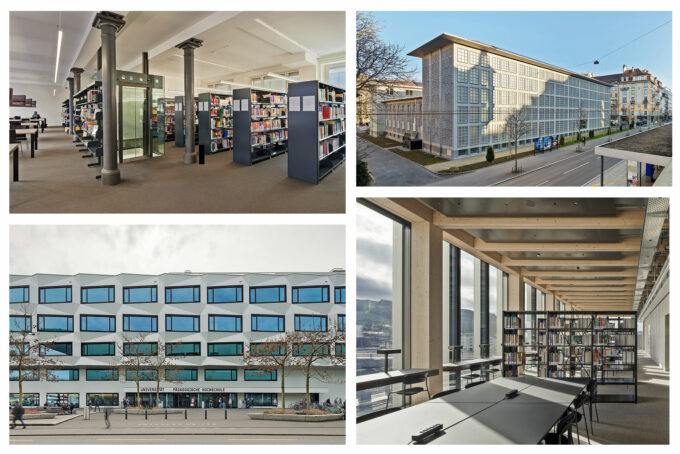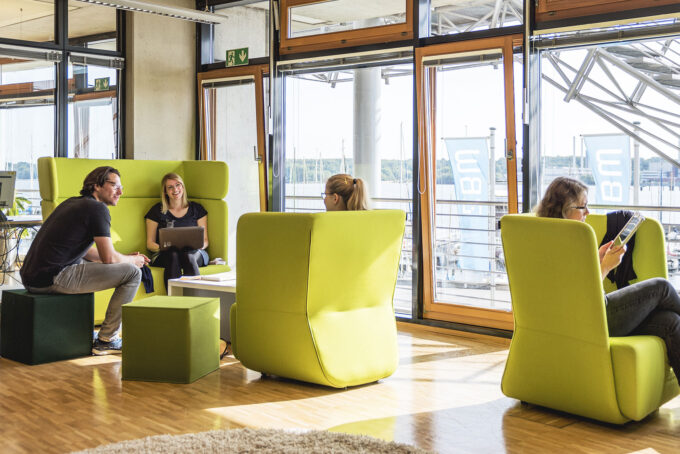
Opening up Science: How the Library will Become a Hub for Open Innovation and Science
Merging open science and open innovation more closely and providing fresh momentum will be the focus of a new initiative from the Stifterverband (Donors Association for Open Science and Innovation). A recently published discussion paper contains the initial recommendations for action. It considers the establishment of open innovation hubs and the role of libraries.
Openness in science and innovation can be looked at in two dimensions: On the one hand, the integration of a wide range of knowledge providers into the different phases of the science/implementation process. On the other, the creation of transparency and free access to the results of scientific study.
A new initiative from the Stifterverband (Donors Association for Open Science and Innovation) has set itself the goal of no longer seeing open innovation and open science as separated according to economics and science. Instead, it is hoped that the joint debate and the creation of interfaces will make it easier to unlock their innovation potential and thus create impulses for the German science and innovation facility.
As a first step, a discussion paper entitled „Was bringt die Öffnung von Wissenschaft und Innovation?“ (PDF in German) has been published regarding the state and value of open science and innovation. Over 50 experts from the fields of science, finance, civil society and politics were involved in writing the paper. The recommendations for action featured in the paper include:
- Tapping into potential in finance, science and society, in order to take better advantage of the interdependencies between open innovation and open science
- Developing new locations for system solutions and hereby giving selected universities the role of ‘Open Innovation Hub’
- Creating incentives and structures in science in order to improve the collaborative production of knowledge
- Developing an explicit political strategy in order to provide actors with support in their efforts to create openness in science and innovation
Libraries could play an important role in this regard. How could libraries be turned into open innovation hubs?
Libraries as bridge-builders
Since creative solutions are often formed at the borders between disciplines, it is necessary to create interfaces and experimental fields for open science and open innovation in finance, science and administration. The inclusion of actors who were not previously represented in research processes leads to positive synergy effects, which emerge from the amalgamation of ideas from science and daily life. If data and results are shared, this means scientists do not have to repeat their work and there is inspiration for new research topics. The opening up of science has positive effects when it comes to motivating young talents in universities and research institutes, since they have increased autonomy and scope for creativity.
The opening up of science entails new ways of thinking when it comes to scientific study. Transparency, a willingness to share knowledge and an openness to research questions from non-specialists are encouraged. Current notions of reputation make it difficult to agree in this respect; the development of university structures could introduce new impulses for openness and innovation in research and teaching. Furthermore, the transfer from the universities into finance and society could be reinforced. This is because the opening of science generates the methodical and cultural conditions for open innovation in science, which in turn contributes to an open, value-oriented innovation system.
Bridge-building is encouraged when it comes to the promotion of open science, where there are still large gaps in knowledge between scientists on one side and the e-infrastructure landscape on the other. So far these communities have been working very far apart from one another. This is where libraries could make a very important contribution, especially when it comes to building bridges between the different communities and target groups in order to promote open innovation.
This comes hand in hand with a range of different approaches to openness, which are committed to the open supply of knowledge and the inclusion of new actors. An increased exchange could provide mutual impulses.
Creating room to experiment and new networking opportunities
New forms of shared creativity in science, finance and administration, joint creation and action could be encouraged by bridge-building. Scientific institutions could assume an emphatic role as hubs in the innovation system.
“Universities could also be anchored as centres of the innovation ecosystem, which belong to the citizen, organised civil society, public and private institutions and even companies. On the other hand, this approach gives universities the opportunity to benefit from the potential of students, employees and partners in different ways.”
Libraries could also contribute in this regard.
“Libraries could become knowledge repositories and new interfaces in open science and innovation processes through the expansion of knowledge mediation and knowledge exchange processes (textual/non-textual).”
But it is also possible to conceive of a central role for libraries in bridge-building beyond the option mentioned in the discussion paper. In concrete terms, they could provide support though networking opportunities and the creation of experimental spaces. For example, these might be real laboratories and makerspaces or (virtual) innovation labs, which include the opening of existing research infrastructures for third-parties. It is also a matter of providing structures and methods, offering advice and efficiently shaping search and matching processes for problems and solution ideas.
In order to achieve this, new intermediaries need to emerge, as described in the discussion paper, and encourage the cultural development for openness, mediate methods, help to overcome barriers and transfer best practices to a wider audience. The opening of science and innovation processes also means that the demands on innovation managers, coaches and intermediaries who transmit ideas between actors, will change.
Prerequisite: Libraries themselves have to be open
If openness in science and innovation is forced, this alters existing structures. Openness has an effect on the division of labour among actors involved in knowledge production and distribution as well as procedures in the innovation processes. Thus, openness also has an effect on institutions in which knowledge and innovation are driven.
“What could an open science learn from agility concepts, like say a flexible and proactive process management, and participation processes in business and administration? On the other hand, how could the innovation system benefit from open science concepts and models overall?”
Central to the successful establishment of open innovation and open science are a culture of openness and the removal of barriers. In order for opening processes to work properly, they need impetus from the organisation’s management or at least its support; managerial personalities who profess openness and, most importantly, also set a personal example within the organisation.
Libraries themselves will reap the benefits
In the end, libraries will also benefit enormously from their transformation into open innovation hubs. They will receive great new impulses for further development of their own organisation and services. At the same time, open formats could help established institutions to recruit innovative talents to work for them, since the scheme will create an environment that is attractive to them, while openness also contributes to a positive public image for the institution itself.
View Comments

Barcamp Open Science: We Need to Talk!
The idea behind Barcamp Open Science is to encourage dialogue about open science...



